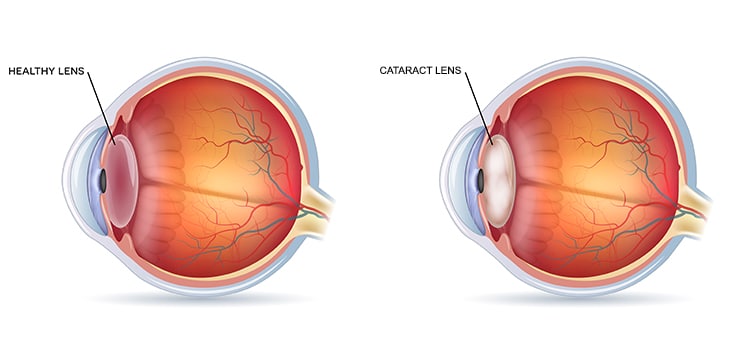Cataracts
Cataracts are one of the most common causes of vision loss, particularly among older adults. A cataract occurs when the natural lens of the eye becomes cloudy, leading to blurred or dim vision, increased sensitivity to light, and difficulty seeing at night. This clouding typically develops gradually and can significantly interfere with daily activities if left untreated.
Causes of Cataracts
Cataracts can form as a natural part of the aging process, but several factors may contribute to their development, including:
- Aging (most common cause)
- Diabetes
- Prolonged exposure to ultraviolet (UV) light
- Smoking
- Certain medications, such as corticosteroids
- Eye injuries or previous surgeries
- Genetic predisposition
Symptoms of Cataracts

Patients with cataracts may experience:
- Blurred, dim, or hazy vision
- Sensitivity to light and glare
- Difficulty seeing at night
- Faded or yellowed colors
- Frequent changes in eyeglass or contact lens prescriptions
- Double vision in one eye
If these symptoms interfere with your daily life, it may be time to consider treatment.
Cataract Diagnosis and Treatment
Cataracts are diagnosed during a comprehensive eye examination, which includes a visual acuity test, slit-lamp examination, and evaluation of the lens. In the early stages, symptoms may be managed with updated prescriptions and enhanced lighting. However, cataract surgery is the only effective treatment to restore clear vision once the cataract significantly impairs sight.
Click here to learn more about cataract surgery.
